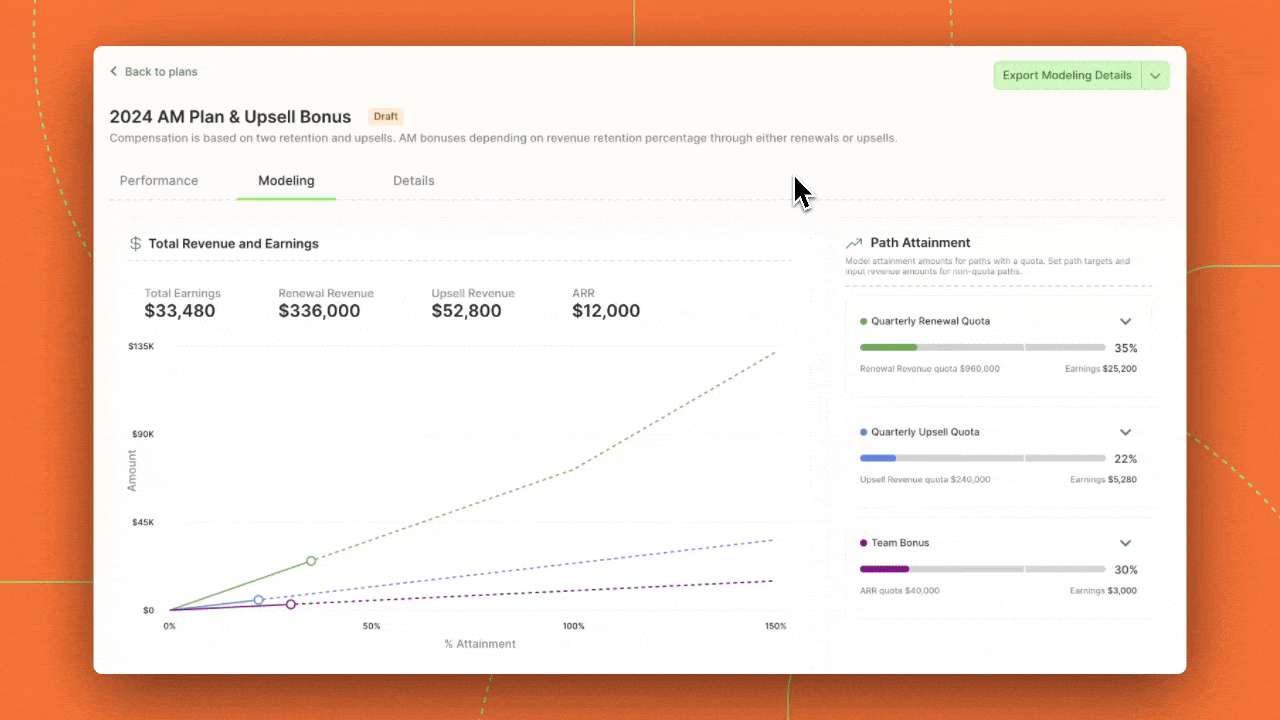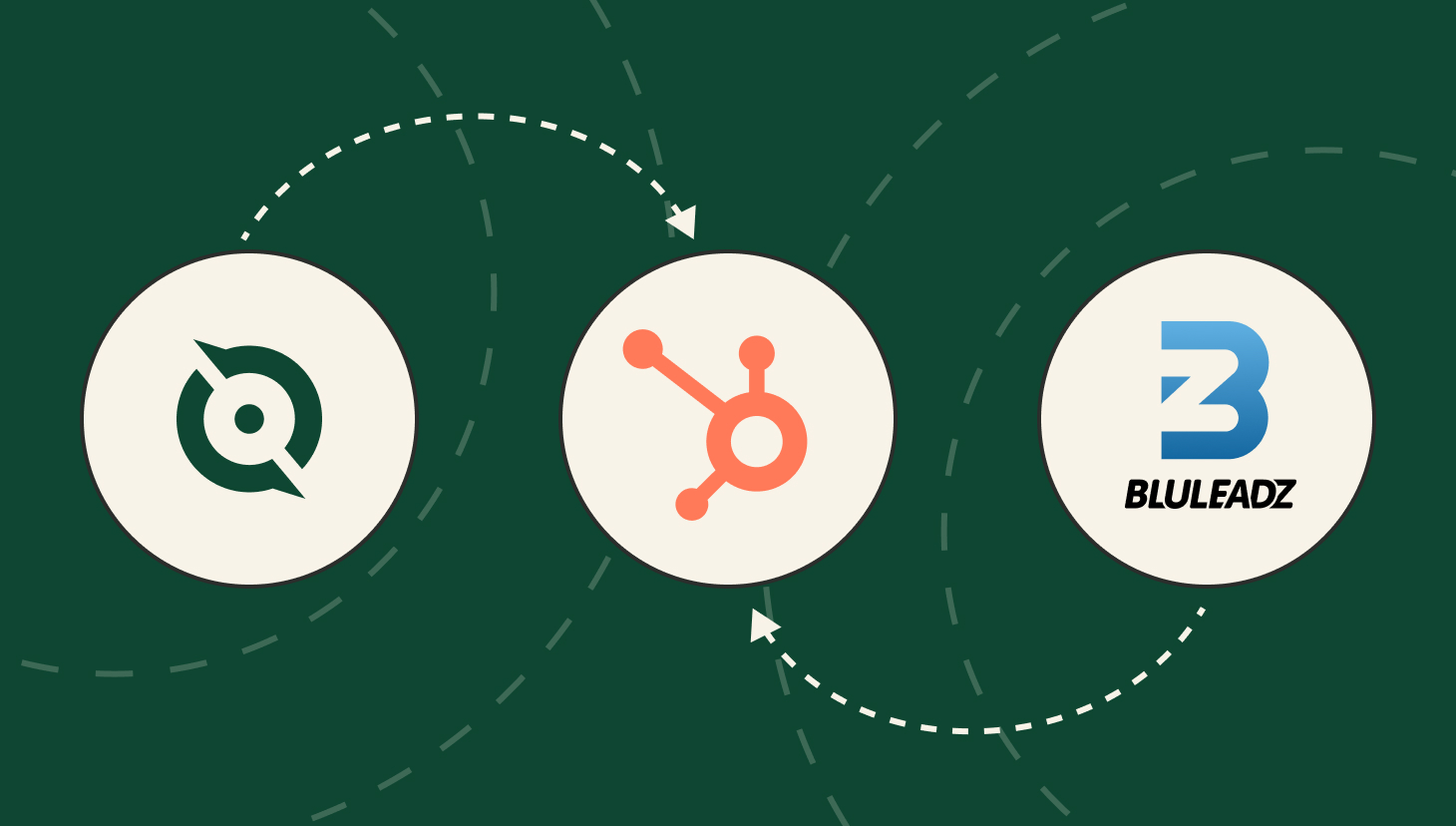Designing comp plans by “gut feel” is a gamble most finance leaders can’t afford in today’s economic climate. With increased scrutiny on spend, compressed margins, and heightened accountability, every dollar of variable compensation must be tied to measurable impact.
Fortunately, tools like QuotaPath empower finance teams to move beyond instinct.
With features like Draft Plans and historical overlays, finance and revenue leaders can now pressure-test comp plans using real data and scenario modeling, before those plans hit reps’ desks.
“I prefer when Sales comes to us with options and pre-proposals… then we can determine if it will break the bottom line,” said Ryan Macia, VP of Finance at QuotaPath.

Why Comp Plan Testing Is Essential for Finance
Only 9% of companies had 80%+ quota attainment last year. That means 91% fell short, according to our report.
The causes? Some point to market conditions, but 31% of revenue leaders cited unrealistic quotas, a problem that can be avoided with robust testing and forecasting.
Unvalidated comp plans often lead to:
- Missed revenue goals
- Overpaid commissions
- Rep turnover due to lack of trust and transparency
QuotaPath helps mitigate all three.
From Intuition to Intelligence: How to Pressure-Test a Comp Plan
Designing a comp plan isn’t just about setting attractive rates and quotas. It’s about understanding the ripple effects each decision has on profitability, performance, and morale. For finance leaders tasked with owning that accountability, a rigorous modeling framework is essential.
At QuotaPath, we recommend a 4-part approach to stress-testing compensation plans before they ever reach your reps.
1. Sensitivity Analysis
What happens if you tweak one variable?
This is your controlled testing environment. Adjust one lever—quota, commission rate, accelerators, draw, or thresholds—and measure the resulting change in cost and attainment distribution.
For example:
- Increase the quota by 10%. How many reps still hit 100%+?
- Drop commission rates by 1. How much do you save across the team, and does it disincentivize performance?
Used correctly, sensitivity analysis identifies breakpoints where comp plans become either too expensive or demotivating.
Design, track, and manage variable incentives with QuotaPath. Give your RevOps, finance, and sales teams transparency into sales compensation.
Talk to Sales2. Bottom Line First
Reverse engineer your plan from your target commission expense.
Start with the top-line budget you can afford to spend on commissions, often 10–12% of revenue or tied to CAC, and model the comp plan that fits within that constraint.
This approach forces prioritization:
- Do you want to send more to retain top performers?
- Are you willing to flatten earnings to increase quota coverage?
Prefect’s Head of Finance, Thomas Egbert, added that while leaders care about and prioritize overpaying commissions, they should focus as much attention on ensuring their reps understand how they’re paid.
“Finance is always worried about overpaying. But worse than that is when reps don’t understand the generous plan you did build for them,” said Thomas Egbert, Head of Finance at Prefect.
Bottom line modeling keeps generosity within control. Just make sure you can easily communicate your plan structures to your revenue teams.
3. Run Scenarios
Next, build projections using forecasted attainment data across rep types.
For instance, you can use QuotaPath’s Draft Plans to run multiple “what-if” versions side-by-side:
- What happens if 80% of reps hit 75% of quota?
- How does the plan scale if you add 20 new sellers mid-year?
- Are you over-indexing on high performers while neglecting the middle 60%?
And we have our customer, NeuroFlow, to thank for that product idea to help finance teams test plans.
“Really early on, we provided feedback about wanting to mock up a plan and run scenarios without using the production environment. During our time as customers, QuotaPath built and released Draft Plans. We’ve used it for at least one year of commission planning,” said Genevieve Moss-Hawkins, Systems Operations Manager at NeuroFlow.
You can also evaluate plan structures: flat rates vs. tiered accelerators, quarterly vs. monthly quotas, or OTE-heavy plans vs. bonus-heavy ones.
4. Deal-Level Commission Cost Analysis
This is where financial modeling becomes a diagnostic tool.
Even if your plan passes the sensitivity test and stays within the top-line commission budget, it’s still possible to lose profitability deal by deal.
This is especially true when multiple people and roles, BDRs, AEs, SEs, managers, touch the same deal and earn a percentage. You may find yourself unintentionally paying out 30%+ of a deal’s revenue in commissions without realizing it.
At QuotaPath, we call this your deal-level total commission rate.
By running a report that rolls up total commission earned on a deal and compares it against the deal’s revenue, you get a clean percentage that shows how efficient, or inefficient, your payout strategy is. We recommend flagging anything over 30% as a sign to investigate further.
Our VP of RevOps, Sales, and Marketing Ryan Milligan said, “You blink and you’re paying 35% of a deal in total commissions once you add up everyone involved. That’s a hidden cost finance leaders need to track”.
With QuotaPath, you can track this automatically using our reporting suite, making it easy to monitor, benchmark, and optimize payout efficiency per deal.
A Win-Win for Finance and Sales
Ultimately, testing comp plans isn’t about slowing down Sales. It’s about enabling smarter, faster decisions that protect the business and create comp plans reps can trust.
This is why visibility matters as much as modeling.
QuotaPath empowers finance teams to:
- Build and compare comp plan drafts before rollout
- Run forecasts with multiple attainment bands
- Track total cost of commissions in real-time
- Give sales reps and managers clear insight into how their performance translates into pay
“The time we got back was huge. I reconcile on a quarterly basis, approve deals quickly, and just export to accounting. Plus, reps don’t need to come through us to get commission answers, it’s all right at their fingertips,” said Genevieve.
Try the most collaborative solution to manage, track and payout variable compensation. Calculate commissions and pay your team accurately, and on time.
Start TrialFinal Thoughts
Designing compensation plans through financial modeling is a non-negotiable requirement.
By investing upfront in modeling, scenario testing, and per-deal analysis, finance leaders not only protect margins but also help fuel a motivated, high-performing sales team.
At QuotaPath, we believe the future of compensation is one where Finance and Sales operate from the same playbook, backed by data, not guesswork.
To begin planning for 2026, schedule a meeting with our team today.



